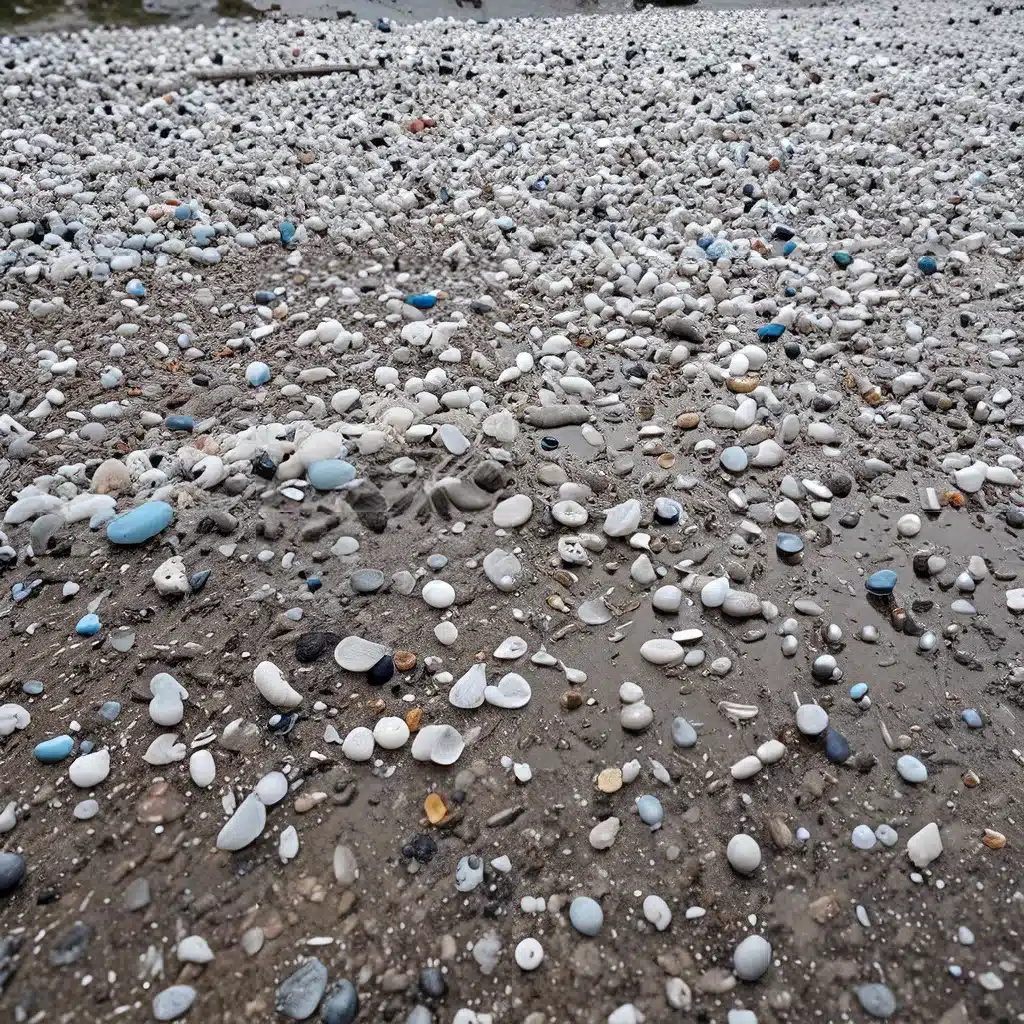
As an environmental enthusiast and someone deeply invested in the health of our planet, I’ve been grappling with the growing concern surrounding microplastics in our wastewater systems. These tiny plastic particles, often invisible to the naked eye, have become a pervasive and increasingly worrying problem, with far-reaching implications for our ecosystems and human wellbeing.
The Rise of Microplastics: A Global Phenomenon
It all started a few years ago when I stumbled upon a news article detailing the alarming presence of microplastics in our waterways, oceans, and even the food we consume. I distinctly remember the feeling of unease that washed over me as I read about the staggering scale of this issue. Microplastics, it seemed, were everywhere, and they were not going away anytime soon.
Recent research has shown that microplastics can enter wastewater treatment plants through various channels, including the shedding of synthetic textiles, the breakdown of larger plastic items, and the use of personal care products containing microbeads. And the problem appears to be global in nature, with studies documenting the presence of these tiny pollutants in wastewater treatment facilities across the world.
Uncovering the Challenges: Filtration and Removal
As I delved deeper into the issue, I quickly realized that addressing microplastics in wastewater is no easy feat. Conventional wastewater treatment methods, designed primarily for the removal of organic matter and nutrients, often struggle to effectively capture these microscopic plastic particles.
Experts at Hazen and Sawyer have highlighted the unique challenges posed by microplastics, noting that their small size and diverse composition make them particularly difficult to remove. Traditional filtration methods, such as those used in primary and secondary treatment, often fall short, allowing a significant portion of microplastics to slip through and eventually find their way into our natural water bodies.
Innovative Solutions: Emerging Filtration and Removal Techniques
But as they say, where there’s a will, there’s a way. Researchers and water treatment professionals have been working tirelessly to develop innovative solutions to tackle the microplastics problem. And let me tell you, the advancements in this field are nothing short of remarkable.
One promising approach involves the use of advanced filtration systems, such as membrane bioreactors (MBRs) and ultrafiltration (UF) technologies. These advanced systems employ fine-pore membranes that can effectively capture even the smallest of microplastic particles, preventing them from being discharged into the environment.
Another innovative technique gaining traction is the use of coagulation and flocculation processes, where chemicals are added to the wastewater to bind microplastics together, forming larger aggregates that can be more easily removed through sedimentation or filtration. This method leverages the unique surface properties of microplastics to facilitate their separation from the water.
But the story doesn’t end there. Some researchers are even exploring the potential of electrochemical treatment, where an electrical current is applied to the wastewater, causing the microplastics to migrate and accumulate at designated collection points for removal. Imagine, harnessing the power of electricity to tackle this persistent problem!
Overcoming Obstacles: Collaboration and Continuous Improvement
Of course, the journey to address microplastics in wastewater is not without its challenges. Technological advancements, while promising, often come with their own set of hurdles, such as energy consumption, operational complexity, and cost considerations.
That’s why collaboration and continuous improvement are key. Water treatment professionals, researchers, and policymakers are working hand-in-hand to refine existing techniques and explore new, more efficient solutions. It’s a testament to the resilience and ingenuity of the human spirit, as we strive to safeguard our precious water resources and the health of our planet.
The Road Ahead: Embracing Sustainable Solutions
As I reflect on the progress made in addressing microplastics in wastewater, I can’t help but feel a sense of cautious optimism. While the challenges are daunting, the advancements in filtration and removal technologies are truly inspiring. And with the growing awareness and collective effort, I’m confident that we can make significant strides in mitigating this global issue.
But the work doesn’t stop here. We must continue to prioritize research, foster collaboration, and invest in the implementation of sustainable solutions. By doing so, we can not only address the immediate problem of microplastics in our wastewater but also pave the way for a future where our water systems are cleaner, healthier, and more resilient.
After all, the health of our planet and the wellbeing of all who call it home are at stake. And as an environmental enthusiast, I’m more determined than ever to be a part of the solution. Inland Waters is committed to leading the charge in this critical effort, and I’m excited to see what the future holds.


